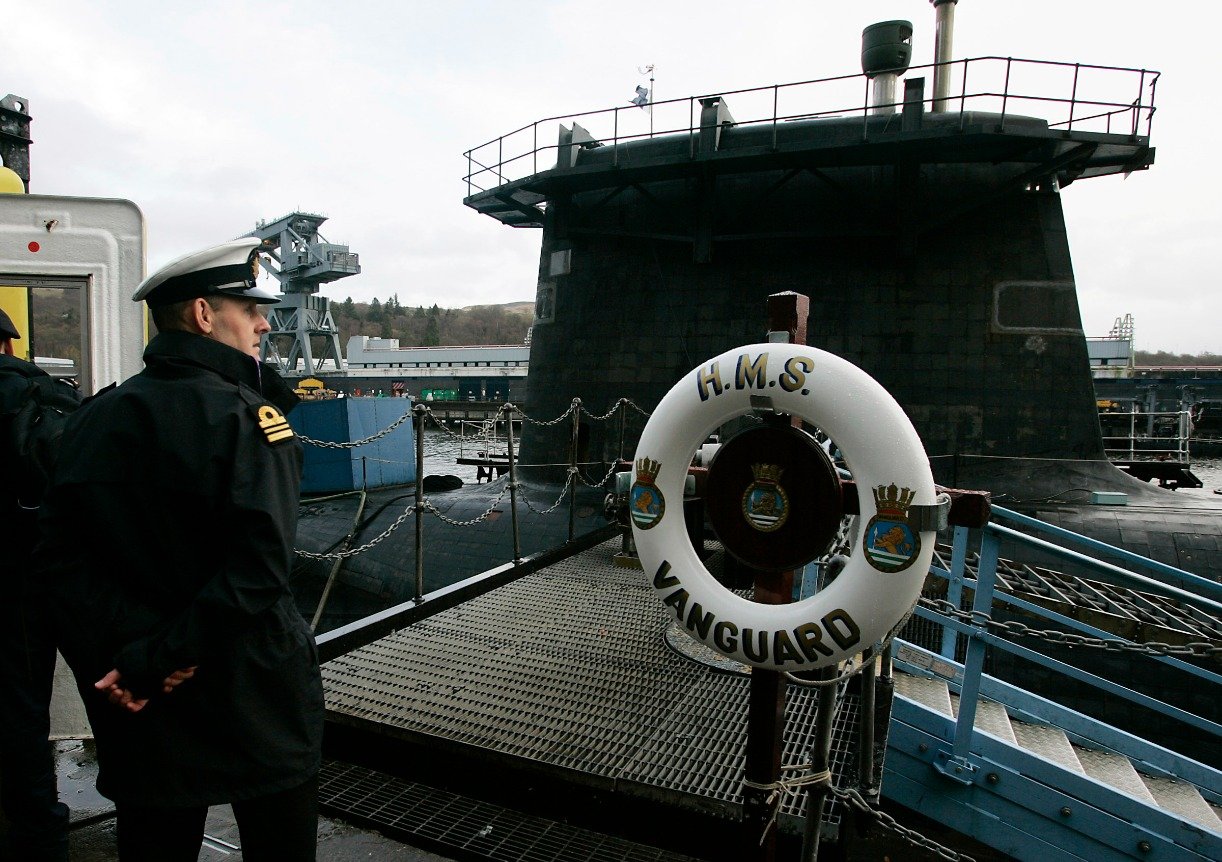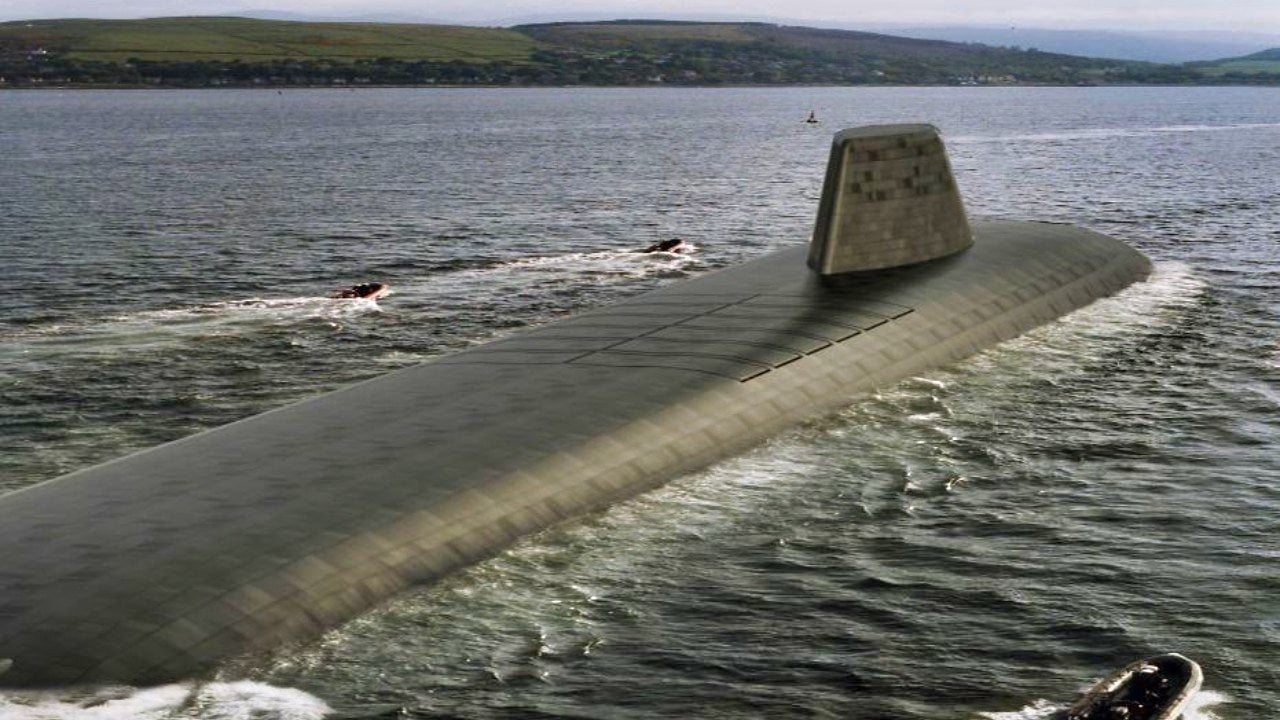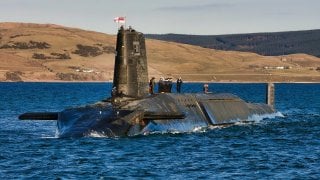Vanguard-Class Missile Submarines Were Built to Fight a Nuclear War Against Russia
The UK's Vanguard-class submarines, introduced over 30 years ago, remain central to the nation's nuclear deterrent. Armed with Trident II missiles, these nuclear-powered subs can carry eight Multiple Independent Reentry Vehicles, each with a 100 or 475-kiloton warhead.
Summary and Key Points: The UK's Vanguard-class submarines, introduced over 30 years ago, remain central to the nation's nuclear deterrent. Armed with Trident II missiles, these nuclear-powered subs can carry eight Multiple Independent Reentry Vehicles, each with a 100 or 475-kiloton warhead.
-Designed to counter Cold War threats from Russia, the Vanguard-class subs are still relevant today due to continuous upgrades. With a displacement of nearly 16,000 tons and advanced sonar systems, these submarines boast impressive capabilities.
-Despite their age, the Vanguard-class will remain in service until the 2030s, when they will be replaced by the new Dreadnought-class submarines.
Vanguard-Class Submarines: The UK's Aging Yet Formidable Nuclear Deterrent
The Royal Navy’s Vanguard-class submarines may be old, but these nuclear-powered ships remain the crux of the United Kingdom’s strategic nuclear deterrent force.
More than thirty years ago, the class of submarines was introduced as part of the country’s Trident nuclear program. The four vessels in this class- Vanguard, Victorious, Vigilant, and Vengeance, are notably armed to the teeth with the incredibly formidable Trident II submarines.
The History of the Vanguard-Class:
During the Cold War, British officials prioritized deterring the Soviet Union. Considering the UK’s proximity to the USSR, this task proved to be quite tricky.
Land-based nuclear missile silos would be too vulnerable to attack by the Soviets, while strategic nuclear bombers would necessitate too much time to become airborne.
Therefore, sea-based deterrence was at the top-tier of the UK’s defense strategy.
The origins of the Vanguard-class can be traced back to the 1960s with the introduction of the UK’s previous Resolution-class submarines.
As part of the 1963 Polaris Sales Agreement, the Polaris missile was supplied to Britain. This American-designed two-stage solid-fueled nuclear-armed submarine-launched ballistic missile was so powerful for its era that it was impervious to counterattack.
The UK armed its Resolution submarines with sixteen UGM-27 Polaris missiles each. Over the next two decades, British officials started thinking about its next-generation replacement submarines for the Resolution ships, in addition to a replacement missile for the Polaris.
Since the UK did not possess the capabilities to design and field its domestic ballistic missile at the time, it was determined that the UGM-96 Trident I would replace the Polaris down the line. By 1982, however, U.S. engineers had already created the Trident II- an advanced variant in the series of missiles.
Then-UK Prime Minister Margaret Thatcher secured the addition of these sophisticated missiles under an agreement made with then-U.S. President Ronald Reagan. Now that Britain had finalized its missile source, it then turned to developing a new and improved submarine.
Introducing the Vanguard-Class:
The UK’s Ministry of Defense designed guidance drawings for the Vanguard class in the early 1980’s. Vickers Shipbuilding and Engineering based in Barrow-in-Furness (currently BAE Systems Maritime-Submarines) would construct the submarines. The Vanguard ships remain the largest submarines manufactured in the UK, each displacing nearly 16,000 tons submerged. Previously, the Resolution-class ships could displace roughly half this amount.
In 1993, the lead ship of the class HMS Vanguard was commissioned, followed by HMS Victorious in 1995, HMS Vigilant in 1996 and HMS Vengeance in 1999. Since each ship in this series is powered by nuclear propulsion, they can sail for much longer without refueling than non-nuclear-powered counterparts. In fact, the class’ endurance is approximated at 60 days. The larger size of the submarines was necessary to accommodate the Trident D5 missile. However, a smaller crew of just 132 sailors and officers can fit on board.
What makes the Trident II missile so lethal:
Armament-wise, the Vanguard submarines can pack a punch. Each ship features four 533 mm torpedo tubes and is armed with deep-diving Spearfish heavyweight torpedoes. These formidable weapons can travel at speeds more than 90 miles per hour. The torpedoes can attack a target with a 660-pound explosive charge, which provides the vessels with both anti-submarine (ASW) and anti-surface warfare (ASuW) capabilities. Perhaps most significantly, the Trident II is incorporated into each submarine in this class. With a range of roughly 7,500 miles, these missiles are deadly in large swaths of territory.
Each Trident can carry up to eight Multiple Independent Reentry Vehicles, which can all sport a 100 or 475-kiloton nuclear warhead. Comparably, the two atomic bombs the U.S. dropped on Japan during the Second World War were 15 and 20 kilotons. Trident II is a three-stage solid-propellent missile with supersonic speed.
As detailed by Naval Technology, “The accuracy of strike on the target is given by the Circle of Equal Probability (CEP) value, which is the radius of the circle within which half the strikes will impact. The Mark 6 guidance system on Trident II is a star-sight aided inertial guidance system, which gives a CEP of 120m.”

Regarding sensors, each Vanguard submarine features the Thales Underwater Systems Type 2054 composite sonar system. The upgraded system includes open architecture processing using commercial-off-the-shelf technology based on a model used by the U.S. Navy for more than two decades. This “world-beating sonar” is allegedly so sensitive that it can detect other vessels more than 50 miles away.
In the early 2000s, HMS Vanguard returned home to begin a two-year refit, which included a new reactor core. Her sister ships followed closely behind. Despite the class overhauls over the years, the Vanguard submarines are scheduled to retire by the 2030s, when they will be replaced with the upcoming Dreadnought-class ships.

About the Author: Maya Carlin
Maya Carlin, National Security Writer with The National Interest, is an analyst with the Center for Security Policy and a former Anna Sobol Levy Fellow at IDC Herzliya in Israel. She has by-lines in many publications, including The National Interest, Jerusalem Post, and Times of Israel. You can follow her on Twitter: @MayaCarlin.


